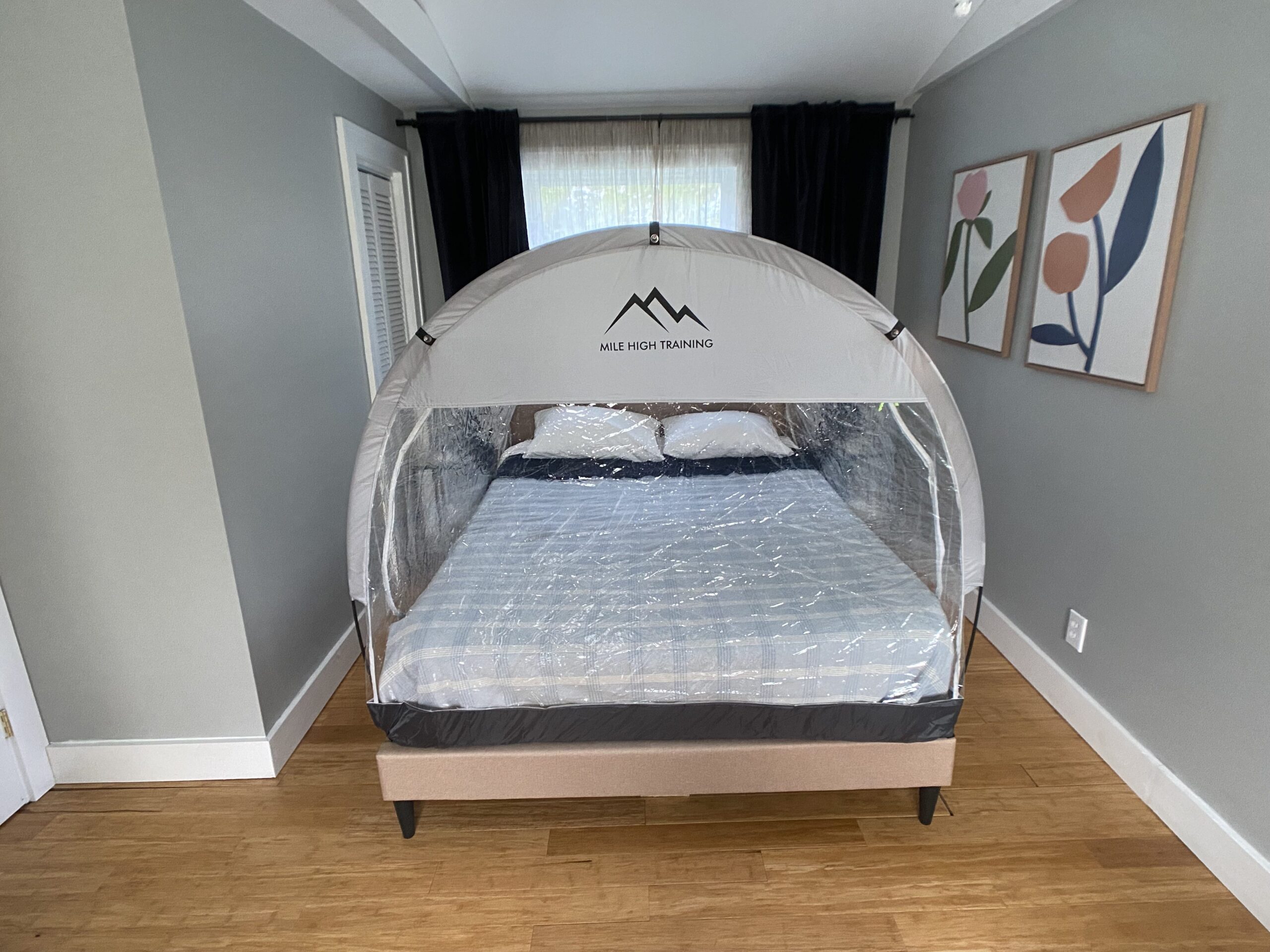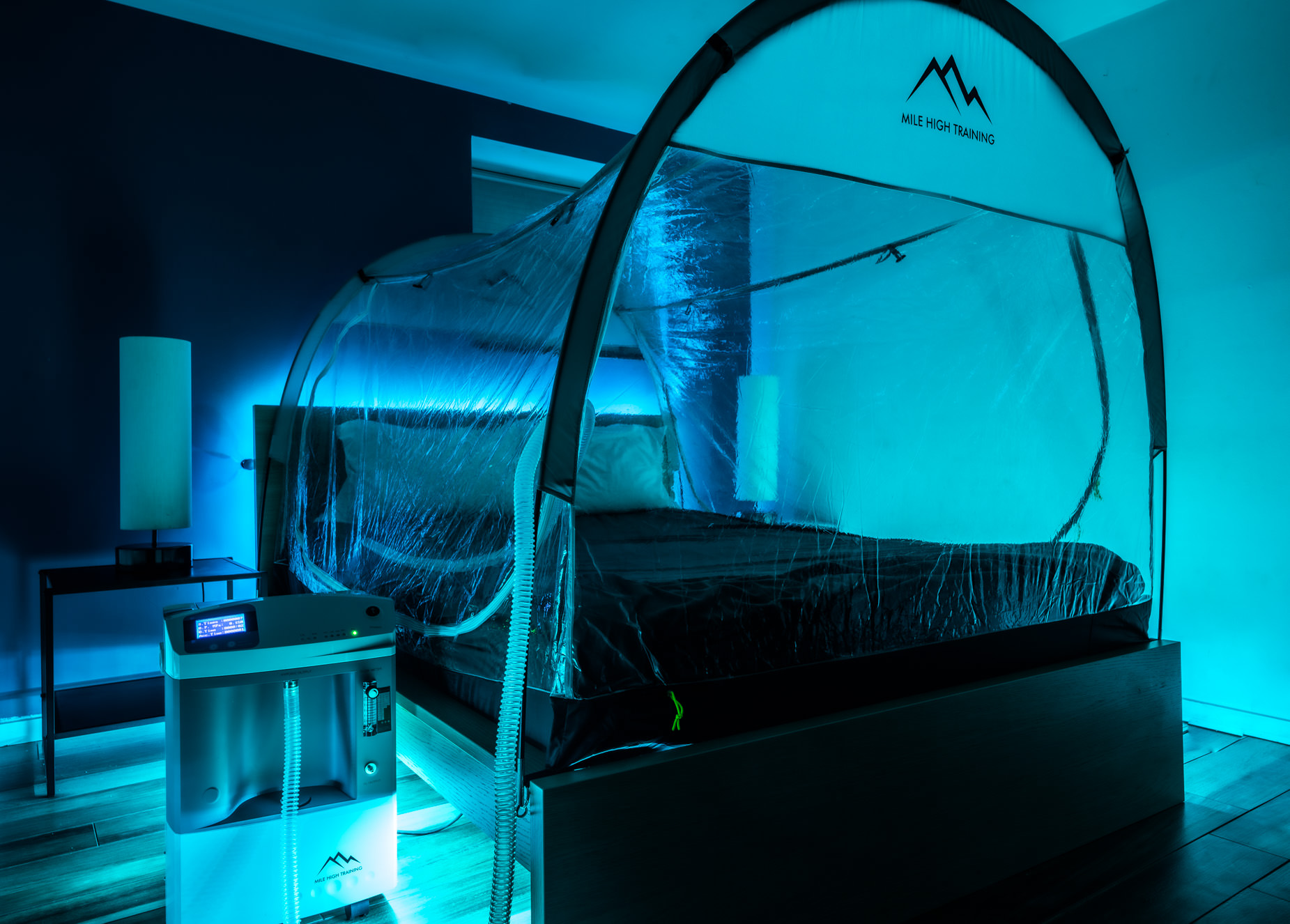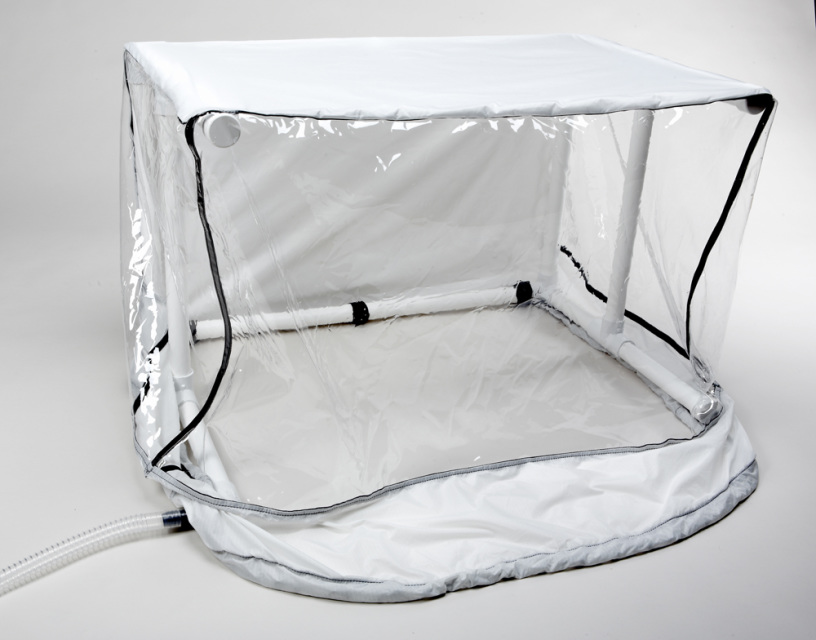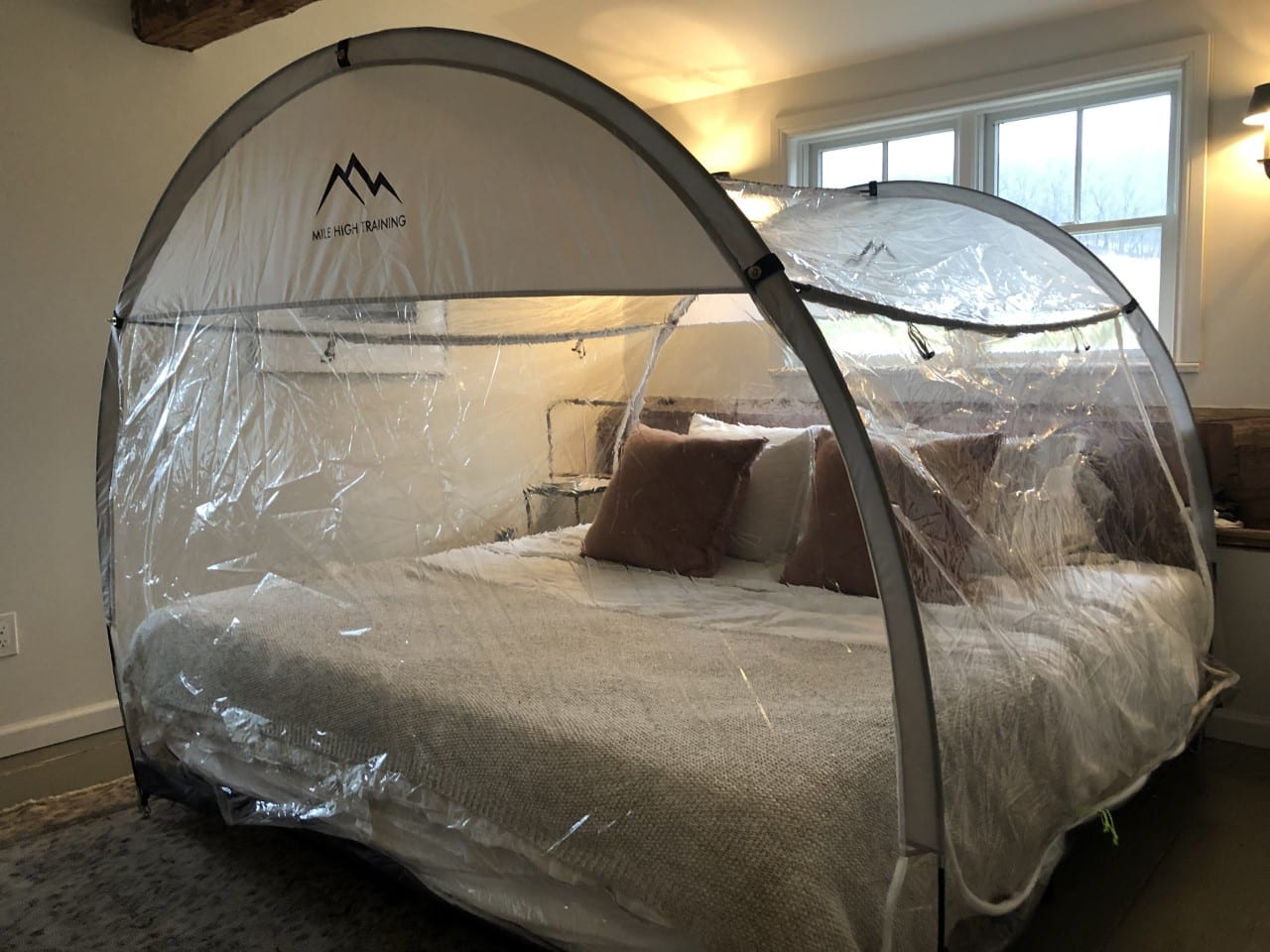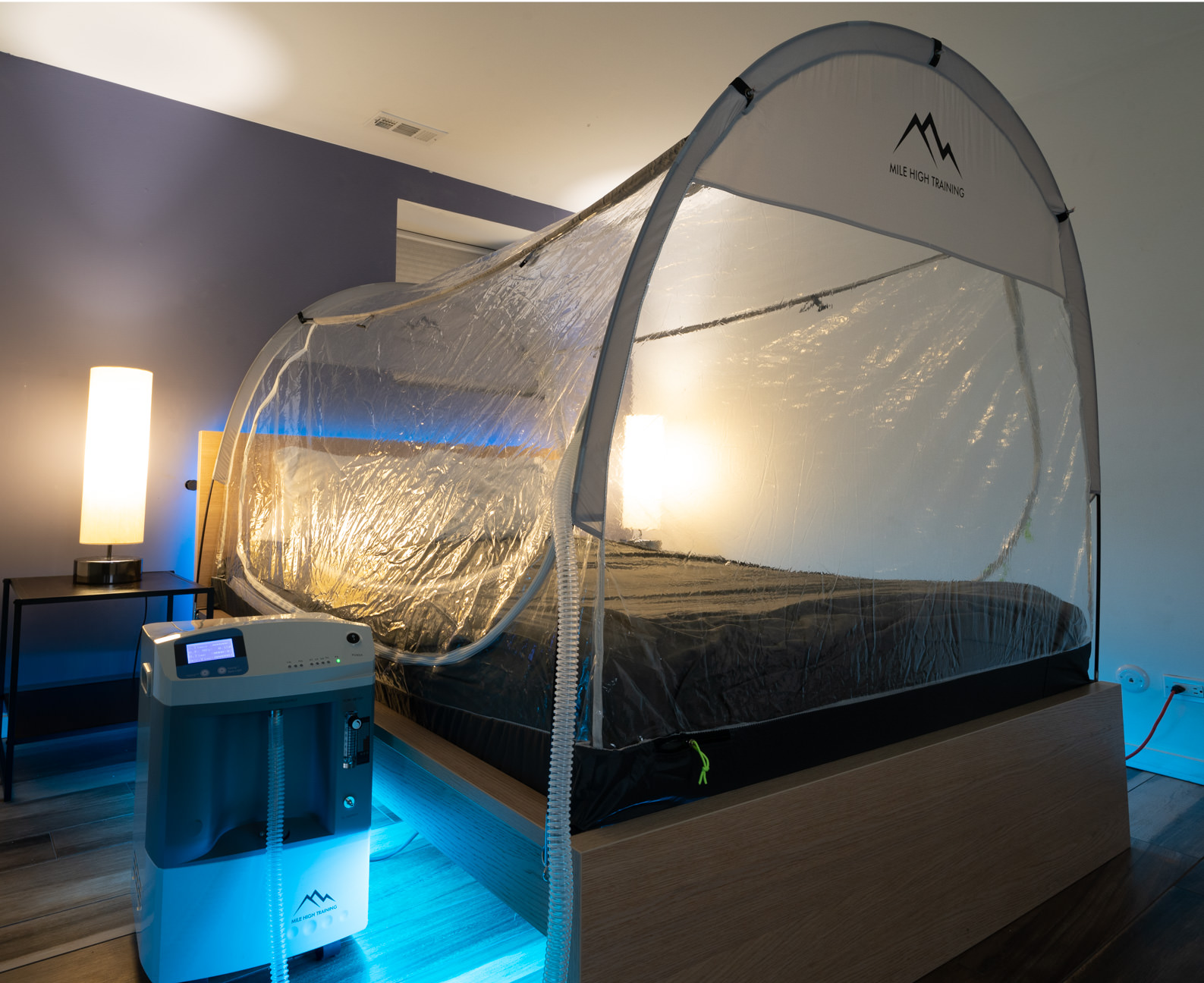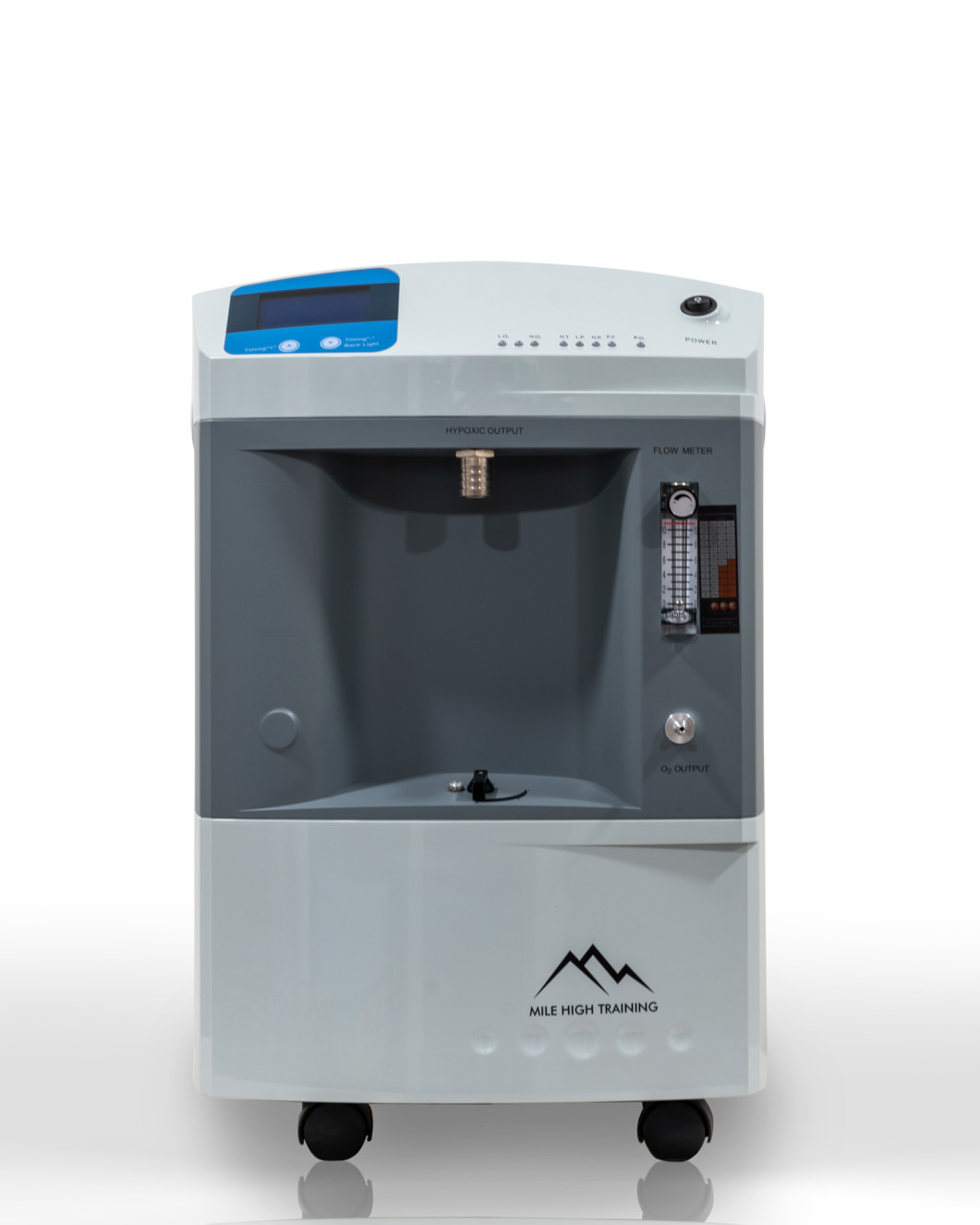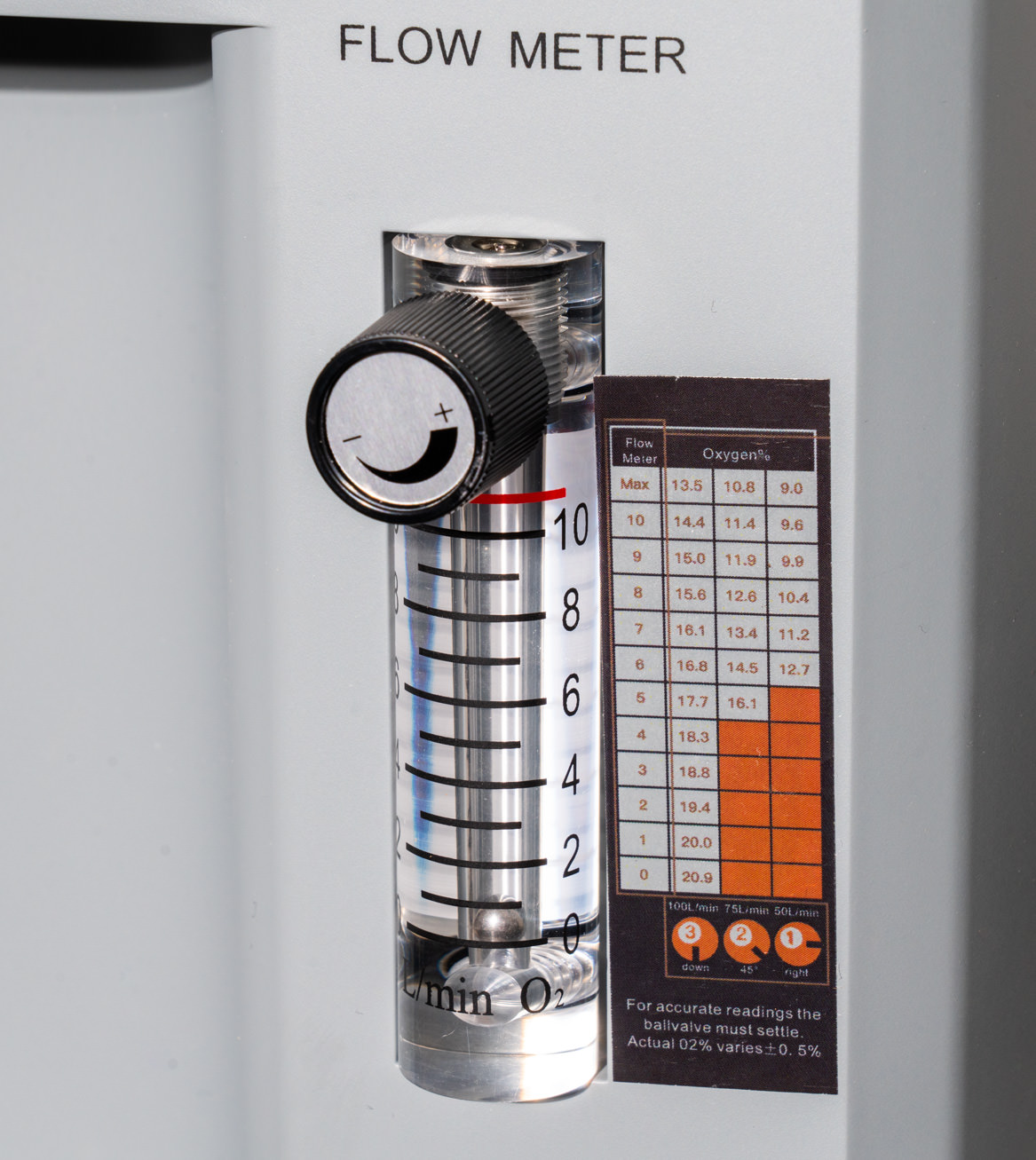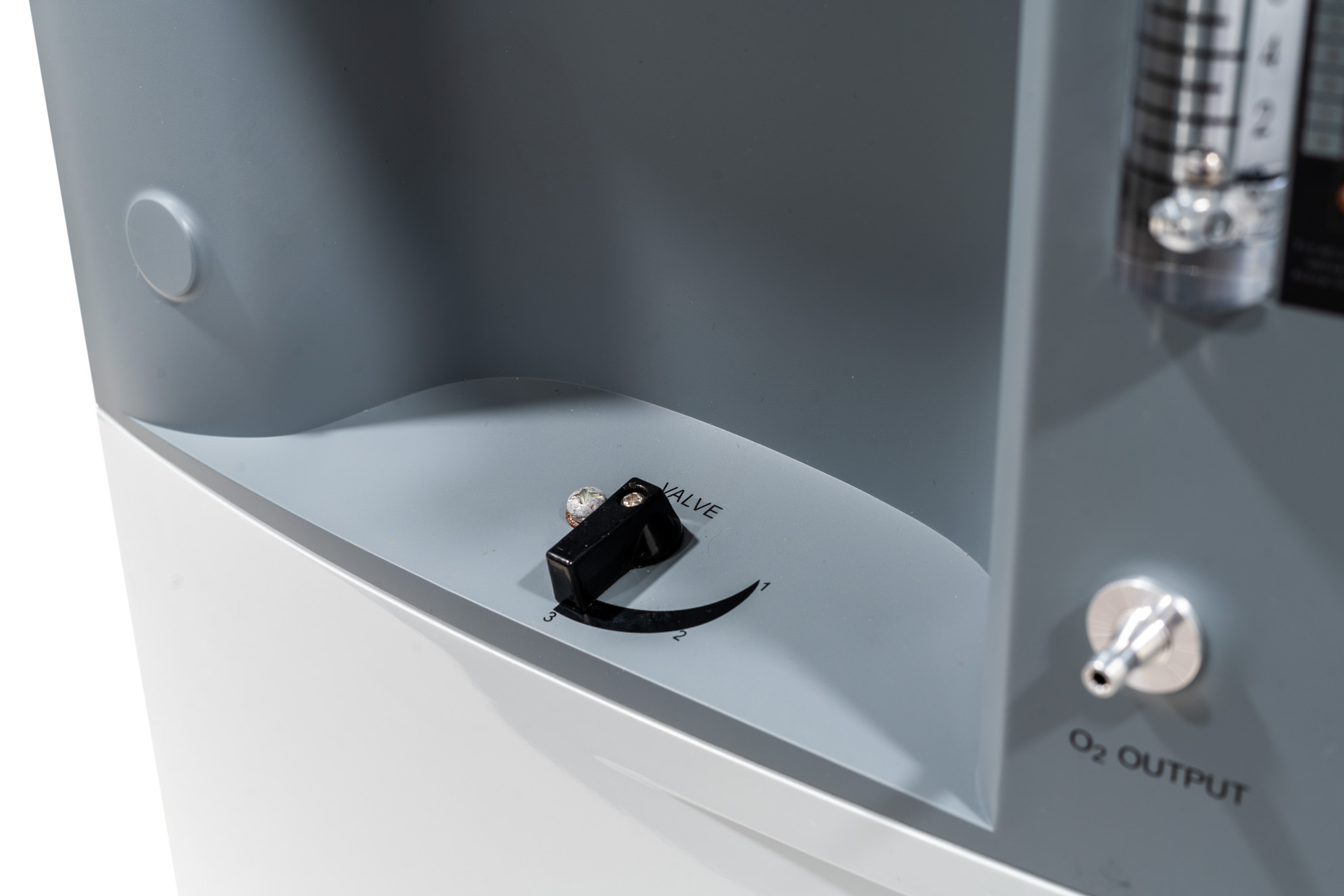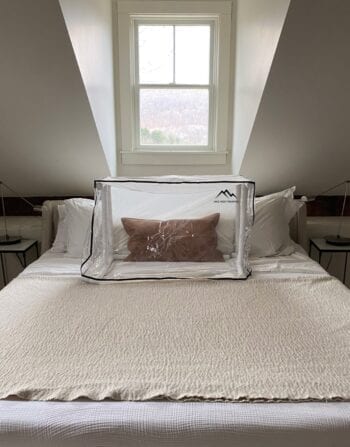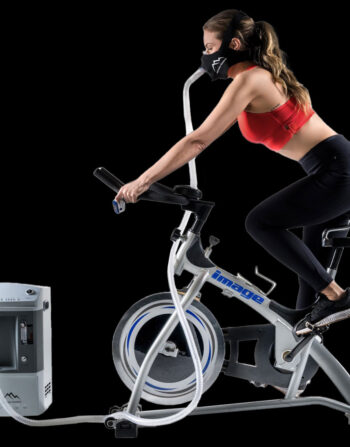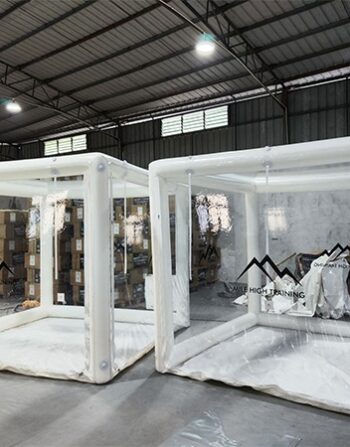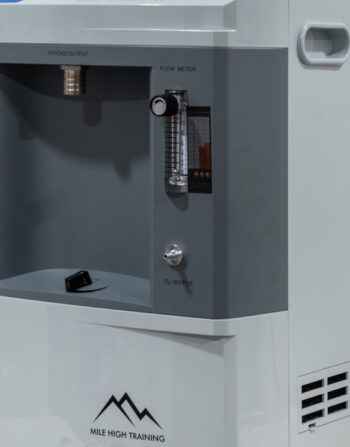Intro to Sleeping at Altitude
Sleeping at Altitude, or “Living High, Training Low” is the most widely used technique for pre-acclimatization and improving endurance sports performance. Combined with our low-oxygen air generator, our altitude canopy enables individuals to sleep at simulated altitude at home or on the road. This training technique has now been used within elite sport for over a decade, and is widely considered to be the most effective to pre-acclimatize to altitude. The canopy fits over the head and shoulders, don't want a full size altitude tent. A great feature of the Altitude Canopy is that it provides immediate altitude (unlike the Altitude Tent, which takes 35 minutes to get to the full altitude set-point).
Sleeping at simulated altitude involves sustained exposure to hypoxia (low-oxygen air) at night with physical training sessions at sea-level during the day. The goal of sleeping at altitude is to lower blood oxygen levels below 94% in order to trigger the production of Red Blood Cells (RBC) and hemoglobin. By gradually increasing the altitude setting on the machine, individuals can adjust the body to high altitudes and slowly build resistance to low blood oxygen levels. Typically individuals will start with the altitude generator around 5,000ft. and slowly increase the altitude approximately 1,000ft every 3-5 days. Most athletes usually sleep no higher than 10,000ft, while mountaineers or anyone preparing for a high altitude hike may sleep up to and beyond 12,000ft, depending on how long they are using or renting the altitude equipment.
Using a high altitude tent avoids inherent problems associated with permanent residence at altitude such as limited training load in oxygen deficient air, muscle loss, immune system suppression, advanced dehydration and excessive fatigue. Through the use of Mile High Training’s altitude canopy and Altitude Bedroom conversion, individuals can safely and effectively take advantage of “Sleeping High” and “Training Low.”
Following the 68′ Olympic Games in Mexico City, numerous American track athletes went on to break American running records. Realizing the only difference in their training was their prolonged altitude exposure, sports researchers looked to portable oxygen concentrators as a way to use the low oxygen air being filtered from the machine to simulate high altitude conditions. After confirming that blood oxygen levels (Spo2) decreased in the same way as real altitude, researchers then used these oxygen concentrators in conjunction with well- sealed canopies to develop the first altitude tents. Since that time, sleeping at altitude in an altitude tent has become a popular training technique for elite and professional athletes from nearly every sport. Mile High Training continues to be at the forefront of altitude technology and is consistently updating and improving equipment to deliver the very best quality, highest performing equipment available in the marketplace today.

